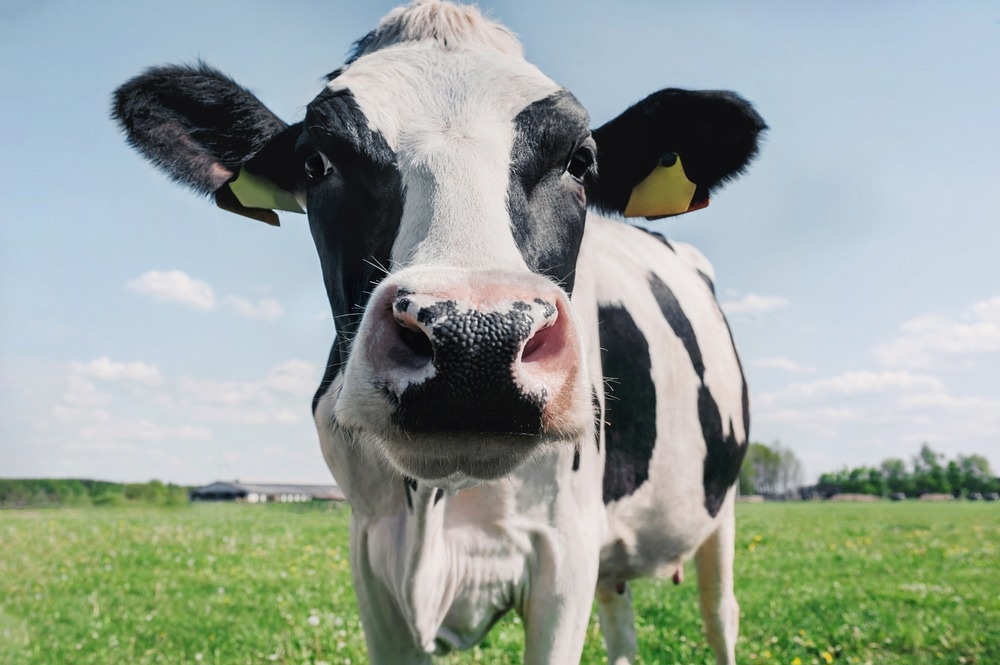Researchers' interest in biosynthesizing nanoparticles from plant extracts is due to their ability to collect metals and decrease metal ions. Since living and dead biomass of plants could be employed in nanoparticle production, they are termed bio-nano factories.

Study: Biosynthesis and extrinsic toxicity of copper oxide nanoparticles against cattle parasites: An eco-friendly approach. Image Credit: Alena Demidyuk/Shutterstock.com
An article published in the journal Environmental Research discussed the use of copper oxide nanoparticles (CuO NPs) biosynthesized from leaf extracts of Aegle marmelos (A. marmelos) against the larvae and adult stages of parasites, Rhipicephalus microplus (R. microplus), Haemaphysalis bispinosa (H. bispinosa), and Hippobosca maculate (Hip. maculate).
The larvae of the parasites were treated with methanolic leaf extract of A. marmelos at various concentrations and CuO nanoparticles for 24 hours. The formation of CuO nanoparticles was confirmed using various analytical methods.
The analysis of methanolic leaf extract of A. marmelos using gas chromatography-mass spectroscopy (GC-MS) confirmed that 26-hydroxycholesterol was the chemical present predominantly in the extraction. The biosynthesized CuO nanoparticles showed maximum efficacy against the larvae of R. microplus, and Hip. Maculate parasites and H. bispinosa adults. Thus, the bio-fabrication of CuO nanoparticles was demonstrated as a promising strategy for developing antiparasitic techniques which are safer than commercially available ones.
Harmful Parasites
Parasites may influence their hosts in different ways; they may cause the host's death due to a direct lethal effect or an indirect effect. Direct lethal effects may occur if killing is a part of the life cycle of parasites or if hosts and parasites have not developed an equilibrium.
Parasites may also influence the behavior of their hosts. If the hosts are intermediate hosts in the life cycle of the parasites, the alterations in behavior may make them easier prey for their predators, the final hosts. Furthermore, parasites may also influence the reproductive success of the hosts.
The southern cattle tick, R. microplus, is the most notorious blood-feeding parasite of livestock,. Over the years, the significance of R. microplus in transmitting various pathogens has grown worldwide. Additionally, the estimated annual loss associated with R. microplus parasite was $2.5 billion throughout tropical and subtropical regions.
H. maculata is an Indian parasite and is also cosmopolitan in distribution. These flies are adapted to exist on their host bodies continuously. Bloodsucking flies cause damage to livestock through both direct damage and as vectors of viral and bacterial infections. Hippoboscidae are well known to infest sheep and cattle in different parts of the world.
The parasite H. maculata is responsible for losses in milk, meat, and leather production and the death of several animals, resulting in economic losses associated with cattle production. Thus, synthetic pesticides are utilized to kill these parasites. However, the chemical agents used in synthetic pesticides have hazardous impacts on non-targeted organisms.
A. marmelos is one of the most important medicinal plants grown in India, Burma, and Ceylon. It is a wild plant found in central and south India and cultivated in north India. Every part of the. A marmelos plant has therapeutic characteristics and is used to treat a range of eye, stomach, and skin disorders.
Biosynthesis and Toxicity Evaluation of CuO Nanoparticles Against Cattle Parasites
Previously reported experimental and clinical studies mentioned that extractions of A. marmelos were traditionally used in curing the disorders of the stomach, eye, and skin. Furthermore, the phyto-CuO nanoparticles derived from Rubia cordifolia were used in biomedical and environmental applications.
However, the applications of CuO nanoparticles in controlling parasites were previously unexplored. Nanomaterials were hypothesized as better alternatives to the hazardous chemicals in vector control, reducing the biological impacts on the natural environment.
In the present work, the potential use of A. marmelos toward the synthesis of CuO nanoparticles was explored. Here the methanolic leaf extract of A. marmelos was used to prepare CuO nanoparticles and the toxic effects caused by the prepared bionanomaterials on cattle parasites, R. microplus, H. bispinosa, and Hip. maculate was evaluated.
Here, the larvae of R. microplus, and Hip. maculate and adult H. bispinosa parasites were exposed to as-prepared CuO nanoparticles for 24 hours, followed by an evaluation of their lethal concentration 50 (LC50) values. The results showed effective action of CuO nanoparticles against R. microplus larvae with LC50 of 4.3 milligrams per liter, less than previously reported values for zinc oxide (13.41 milligrams per liter) and silver nanoparticles (8.98 milligrams per liter). On the other hand, the larvae of Hip. maculate and H. bispinosa adult parasites, showed LC50 of 11.13 and 9.5 milligrams per liter, respectively.
Conclusion
Overall, the antiparasitic activity of biosynthesized CuO nanoparticles was assessed against the parasites, R. microplus, and Hip. maculata larvae, and H. bispinosa adults. Synthesizing CuO nanoparticles from the A. marmelos plant was a cost-effective and reliable strategy for parasite control.
Analyzing the methanolic leaf extract of A. marmelos by utilizing GC-MS confirmed the presence of 26-hydroxycholesterol as a major component. In brief, the research findings from the current study indicated that the CuO nanoparticles could control bloodsucking parasites, and extensive research on green synthesized products could help in estimating their efficiency as antiparasitic activity.
Reference
Kamaraj, C., Gandhi, P.R., Kumar, R.C.S., Balasubramani, G., Malafaia,G. (2022). Biosynthesis and extrinsic toxicity of copper oxide nanoparticles against cattle parasites: An eco-friendly approach. Environmental Research. https://www.sciencedirect.com/science/article/pii/S0013935122013366?via%3Dihub
Disclaimer: The views expressed here are those of the author expressed in their private capacity and do not necessarily represent the views of AZoM.com Limited T/A AZoNetwork the owner and operator of this website. This disclaimer forms part of the Terms and conditions of use of this website.